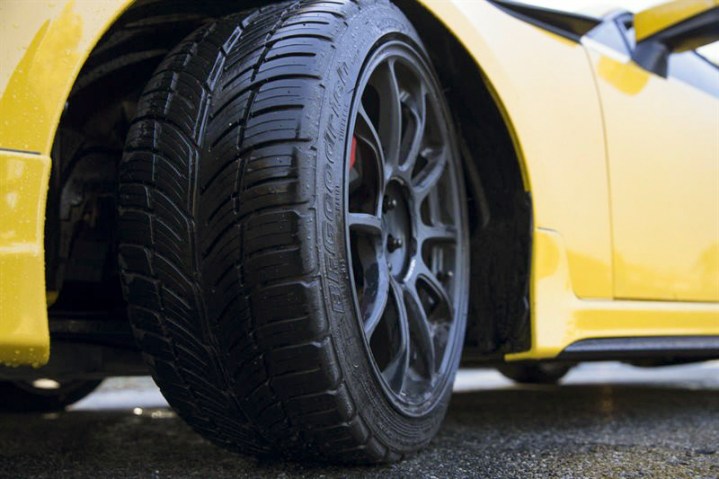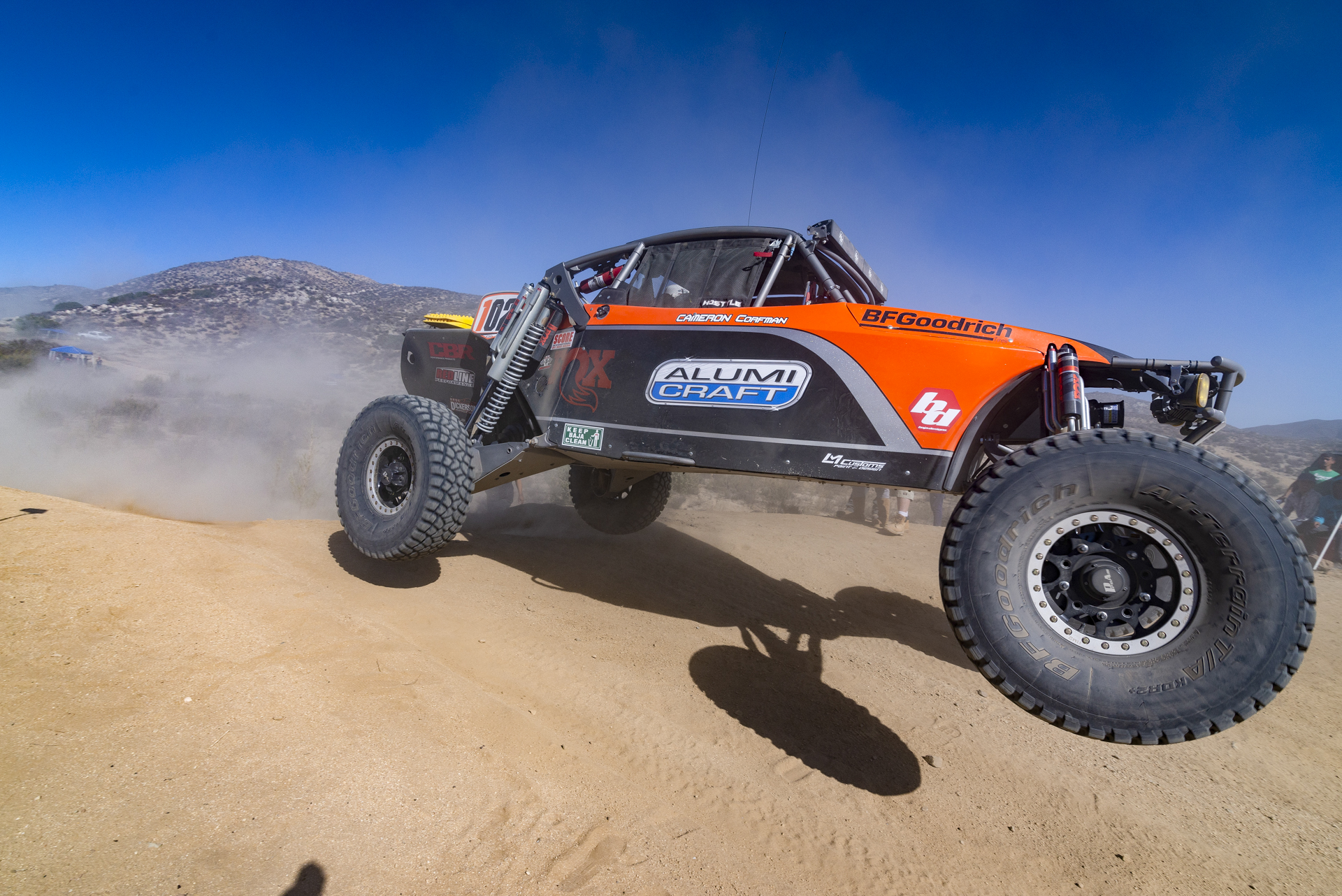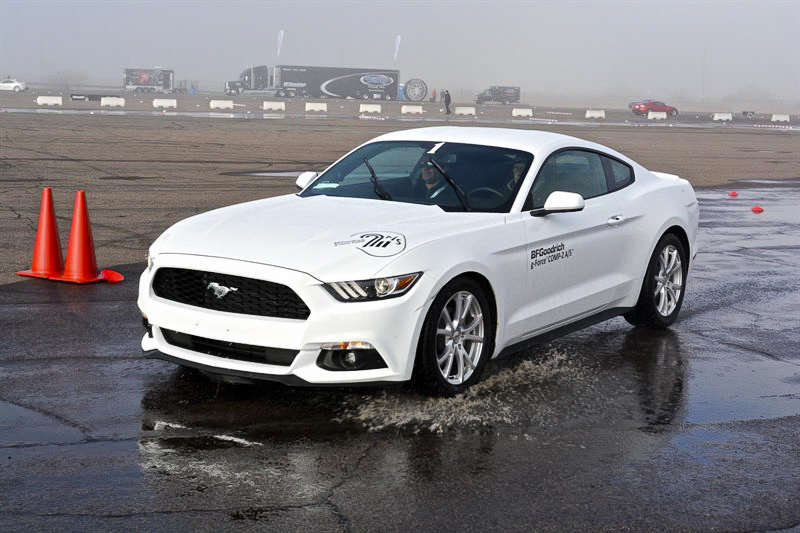
“Most people take the tires on their cars for granted,” said Jay Jakupca. “You buy them, you use them, you either like them or you don’t. They make noise or they don’t, for whatever reason. We know that there’s some steel belts in there, and we know that there’s some rubber on the top, and it’s got a tread pattern. But apart from that, we don’t tend to really know much or dive into that.”
Jakupca knows more than that; he’s an off-road tire designer for BFGoodrich. When the Digital Trends team realized that we didn’t really know nearly enough about tires, we called Jakupca and his on-road counterpart at BFGoodrich to see if we could catch a clue.
Making Tires is Kind of Complicated
When you think about it, an ordinary tire is an amazing piece of work. It’s soft enough that you can leave a mark in it with your fingernail, but it lasts 20,000 to 50,000 miles on your car. In the course of an average tire’s service life, it may have to work in sub-zero temperatures in a blizzard or above 150 degrees on a hot summer day. It will roll over rocks, curbs, potholes and worse, and it will keep going. To survive, a tire has to be tough enough to take a hit and flexible enough to bounce back millions of times.

That toughness is built in when a tire is made. It starts with the twin rings that seal the tire to the wheel. Every tire is built up around those two stiff wire rings. Layers of rubber, reinforced with nylon, polyester, Kevlar or other materials go on first to create what tire makers call a carcass. Then rubber-coated layers of flexible steel wire are layered onto the outside. Each layer is attached with an adhesive. Finally, the soft rubber that makes the tread surface and the sidewall are applied and glued into place.
Once the “green” tire is made, it goes into a mold for curing. The mold has the tread pattern on its inner face, and the tire is heated and pressurized into the mold. This action forms the tread, along with the raised writing you find on the sidewalls. When the tire comes out of the mold, it’s ready to be tested and shipped out.
“… If you say you want to have the best mud traction there is — well, there is going to be some compromise.”
There’s more to it than that, of course. Rubber compounds are dramatically different between winter tires, high-performance tires, truck and heavy equipment tires, and the low-rolling-resistance tires used on many hybrids and EVs to improve energy efficiency. The rubber compound used by any tire maker is a closely guarded secret; they won’t even discuss the ingredients, much less the formula.
“It is a very elaborate and long process,” Jakupca said. “We go through many, many, compounds because different compounds will give you a couple percent in wet traction, or it can give you two percent better handling. It might not seem like much, but the compound is very crucial. You don’t want to use a summer compound on a winter tire.”
Designing Tires is Super Complicated
Once you’re at the point of actually making the tires, the hard work is already done. To get a closer look at the design process, we contacted Kevin Reim, Global Product Category Manager for B.F. Goodrich On-Road Products.

“Compound, tread design, and architecture, all that gets proven through our experience in racing and helps guide us in development,” Reim declared. “But we do our traditional development process as well, where we are creating concepts, modeling them within our computer systems and then testing them, actually simulating them within our computer systems.”
Computer simulation allows engineers like Jakupca and Reim to work through as many potential designs as needed before they have to commit to a prototype. The first step to designing a new tire is to ask questions.
“It’s really about trying as many ideas as we can, within reason, after we’ve simulated what we want to. Then that tire goes to testing.”
“What in particular are we trying to strive for?” Jakupca asked. “For instance, if you say you want to have the best mud traction there is. Well, there is going to be some compromise. A lot of times you might have to sacrifice noise, or you might have to sacrifice wear. For example, our BFGoodrich KM3 off-road tire is built to climb, built to conquer. So we need to be able to have mud traction, rock traction, and we also need to have this very robust sidewall.”
“We do a lot of market-to-consumer study,” Reim said, “and we take a lot of feedback from consumers. We put the needs of the consumer as well as the needs of the market and all the regulatory requirements together in a very specific product specification, along with key targets for performance and other specs.”
Once they know what they want, the engineers use a sophisticated virtual testing model.
“We have simulations for traction and various elements like wet pavement,” Reim told Digital Trends. “We have some hydroplaning simulations that we run. All of these things help develop and prove out our concepts. Once we think we’ve got the ideal combination, we will build our prototype variations. It’s really about trying as many ideas as we can, within reason, after we’ve simulated what we want to. Then that tire goes to testing.”
Real World Testing
Testing a new tire design is methodical, repeatable, and data-driven.
We collect all this data and we crunch that down to make decisions on our next move in the product development cycle.
“At the point we go to testing, we’ve got a number of prototype tire variations,” Reim explained. “Then we go to our test facility in South Carolina. We’ve got a number of tracks and a number of vehicles there. The whole point is that we’re trying to simulate or replicate the conditions that these tires will be used in, and even more extreme conditions.”
For a driving enthusiast, being a tire test driver could be the ultimate career.
“Our test drivers are very well trained and experienced in detecting nuance between these products and giving us feedback to the various testing that we’ve requested,” Reim said. “Testing typically entails the usual wet and dry braking, noise, and comfort. But we do a lot of autocross in the wet and the dry.” So the testers are paid to autocross. Sign us up!

In addition to human testing, there’s automated machine testing.
“It’s very objective,” Reim stated. “Machine testing is more for durability and endurance. We collect all this data and we crunch that down to make decisions on our next move in the product development cycle. We typically go through several rounds of concept generation into prototyping and testing before we arrive at what we believe is the best product for the market. So a lot goes into every new product.”
The Ultimate Test is Real Life
Jakupca’s job is to make the off-road tires that will conquer the toughest races in the world, like the Baja 1000. Drivers running BFGoodrich tires have won the Baja overall 30 times. In 2018, eight of the top ten drivers in the Baja 1000 raced on BFGoodrich tires. That race is seen as the ultimate test.
“We got some of the data from the 2016 Baja,” Jakupca said. “That information was critical to us to look at what needed to be tuned. From the off-road perspective, the Baja gave us the confidence we needed in the KM3.”
“We’re a performance brand,” Reim insisted. “We put out products that really cater to performance seekers. Folks who really appreciate the performance that they can get out of vehicles and of course the components that fit those vehicles. So we’re involved in a number of motorsports venues for on-road development. Whether it’s carcass construction or it’s the compound for the tread or even the tread design, that nets us the know-how that it takes to produce more mass market products.”
The Next Challenge
Cars, trucks and SUVs are continually coming up with more torque and more horsepower, and that places an ever-increasing demand on tire makers like Jakupca and Reim. Further, it’s not just that there’s more raw torque and speed; it’s when and how that torque is applied.
“With electric systems the torque is starting to go through the roof and we expect it to continue to go that way,” Reim told Digital Trends. “So right there we understand where we need to go with our product. We’re going to have to come up with tread designs that are more rigid to be able to handle that torque.”
Once you understand the work that goes into your tires, it’s hard to take them for granted. Keep that in mind the next time you’re about to run over a rock or pothole.




